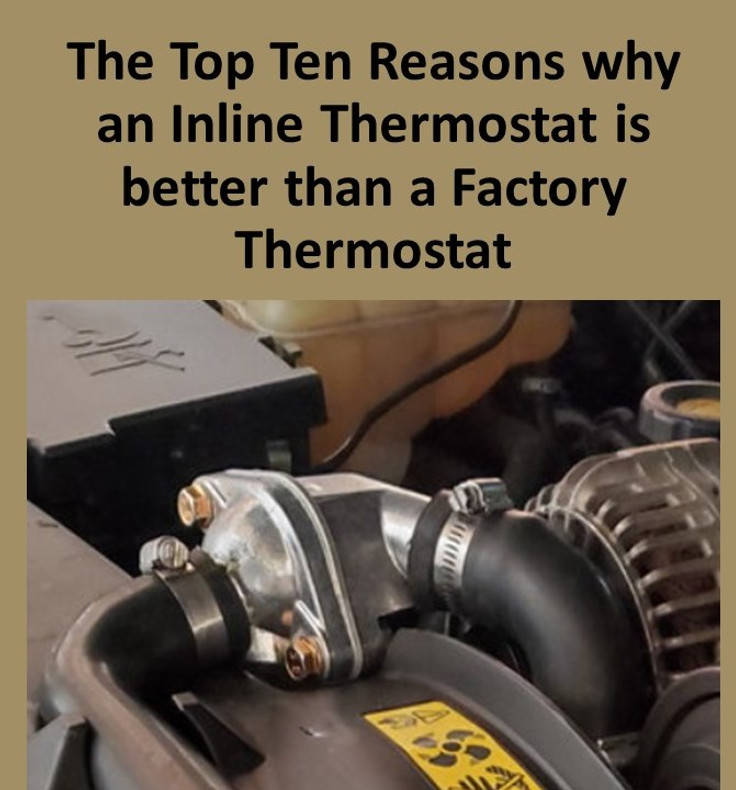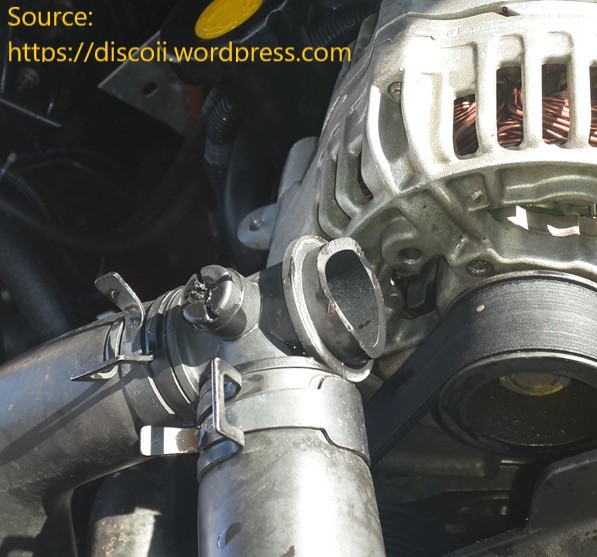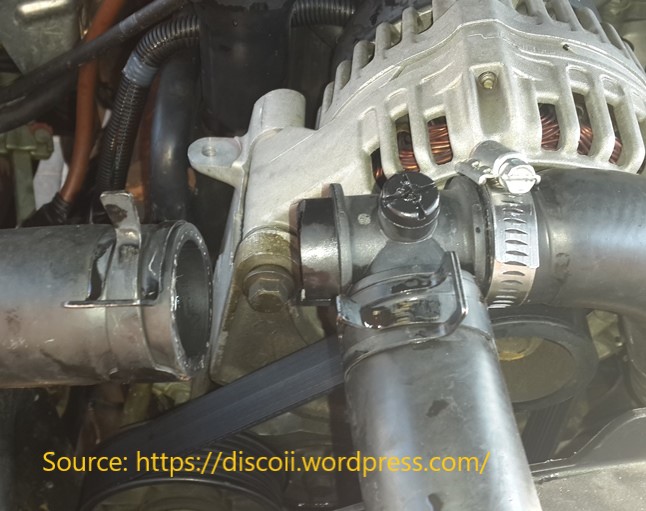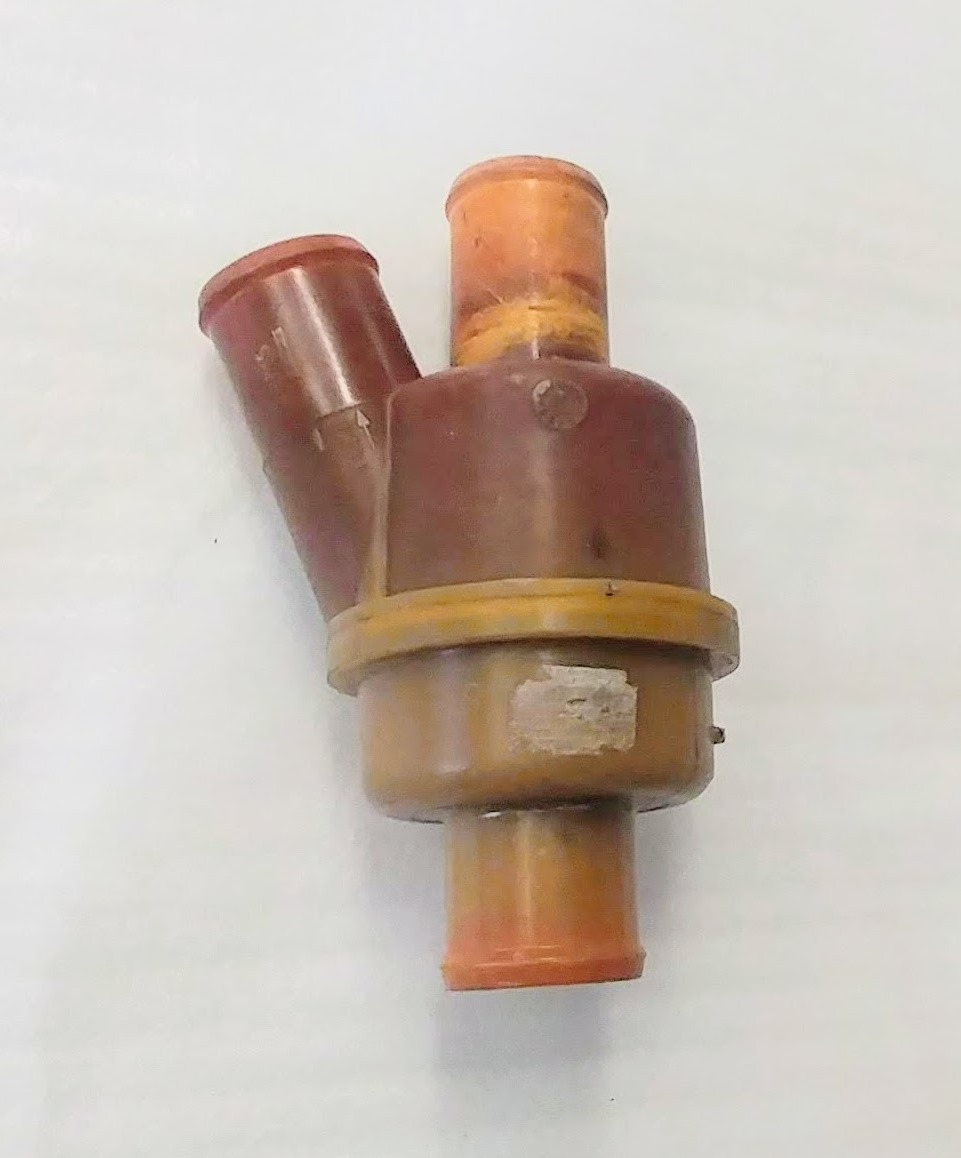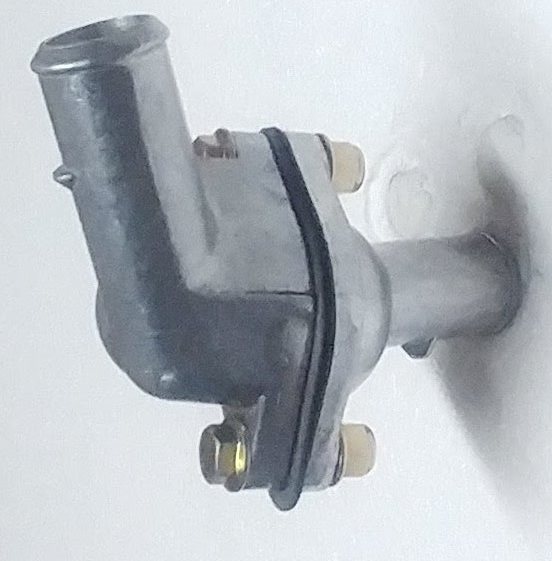So I have been seeing a lot of misinformation on Facebook groups lately along the lines of :
"The factory thermostat is better than the inline thermostat mod"
"The inline thermostat mod causes the truck to run rich"
And other statements not founded in fact or objective analysis, so I thought "Time for the engineer to do a blog post".
So today, I will go over the TOP TEN reasons why an inline thermostat is better than the factory thermostat system.
I will start by saying this blog post will not be specific to certain manufacturer of inline thermostat but will discuss more generically inline thermostats in general. There are multiple types available and the point of this post will be that ANY type of inline thermostat is better than the factory systems.
Additionally, this post will NOT go in to detail of all the aspects of the inline thermostat mod, I did fairly extensive write up on that here:
The Official Extinct Inline Thermostat Mod Thread
Before we get started however, I will address the recent post I saw on Facebook stating:
"The inline thermostat mod causes the truck to run rich".
This is of course completely wrong. The D2 ecu puts the engine in closed loop operating mode very quickly after starting, long before the engine is at normal operating temperature. Closed loop operating mode means that the engine fueling is controlled by the oxygen sensor feedback maintaining the air fuel ratio at the stoichiometric ratio of 14.7:1 regardless of the engine temperatures. This can be seen by looking at the oxygen sensor voltage cycling between their high and low readings on a data logger as seen in the video below. As most enthusiast know narrow band oxygen sensors switch from a very low voltage of around .1 v to around .9 volts at the 14:7 AFR ratio, so the ECU basically cycles the fueling rate between the two readings delivering an average of 14.7.
So with that bit of misinformation out of the way, on to the top ten reasons!
#10 - No factory tee fitting!
The factory tee fitting is plastic and is known to deteriorate, crack, and leak. There is also a bleed screw that has been known to blow out or otherwise suffer from stripped threads. To solve these problems the market has created metal parts that we can buy to solve the problem but why buy just a better part when you can eliminate it and make it simpler!
#9 - Less Hoses
The inline thermostat mod eliminates the bypass hose, so one less hose to leak, rupture, or replace!
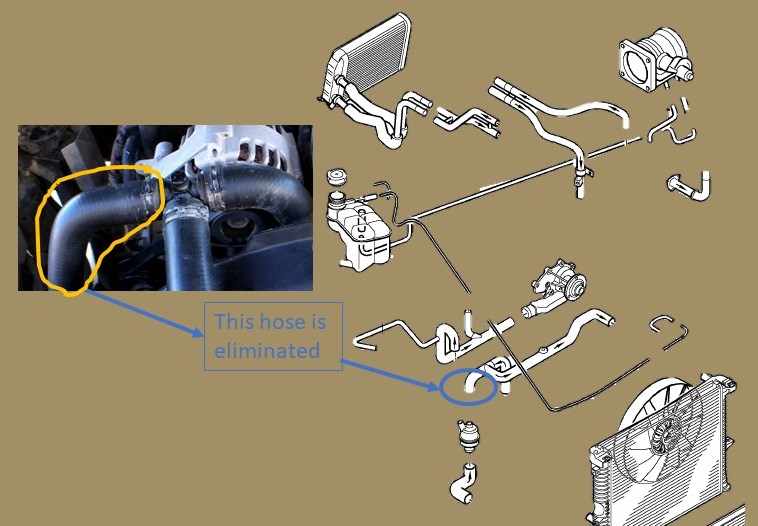
#8 - Sensor port option
The inline thermostats options frequently include an option for a sensor port for such devices like external temperature gauges and electric fan controllers. Of course like the available metal tees there are available separate accessories for this, but do you really want to buy one more additional part?
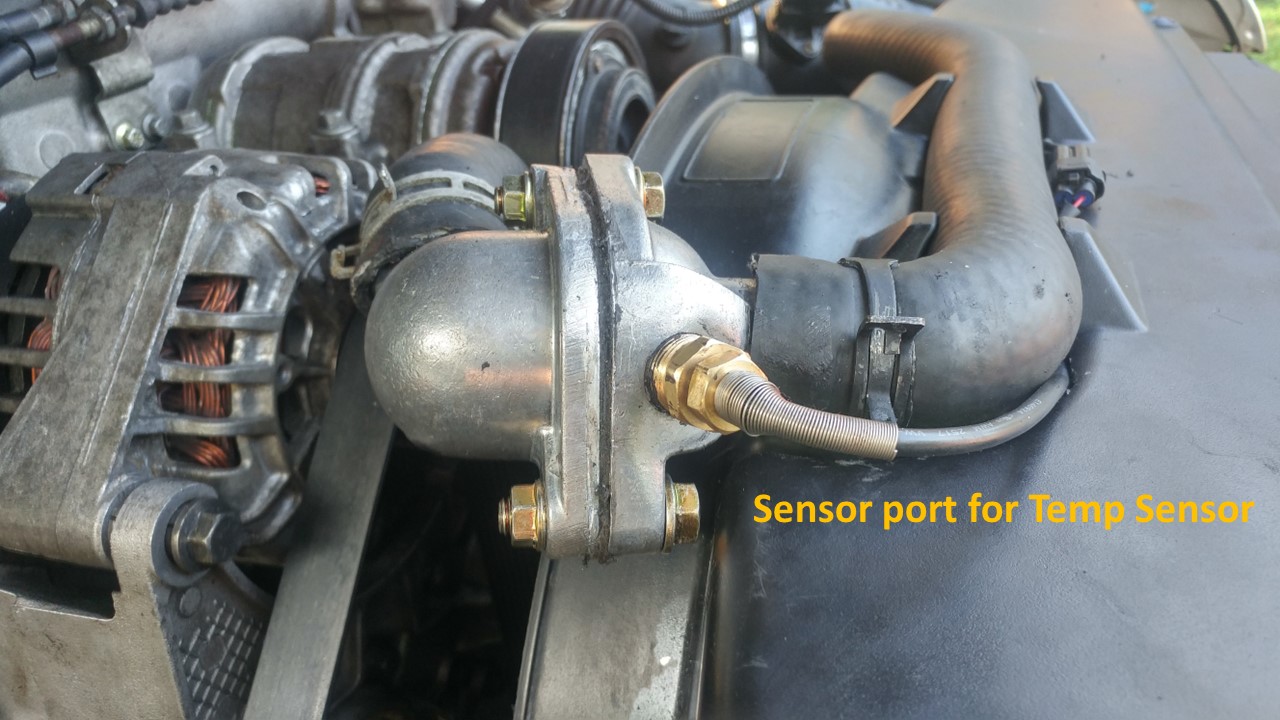
#7 - More consistent temperature operation
Getting factory style thermostats that operate consistently has been an increasingly difficult issue in recent years with the prevalence of many aftermarket manufacturers offering D2 thermostats. This of course has led to many user recommending different manufacturers, colors, "OEM" thermostats, etc.. Beyond this however, it is well known that even OEM 180 degree thermostats have a very high failure rate both in terms of catastrophic non-functioning as well as partial functioning where the bypass valve does not shut off the bypass line completely allowing the coolant to bypass the radiator and increase operating temperatures above the thermostat rating as a result.
#6 - Easier bleeding
The factory systems with the thermostat down low is known to trap air and cause all sorts of bleeding problems, so much so the factory put a bleed screw in the upper tee. Even with that the system is difficult to bleed with lots of recommendations from users that run the range from putting the system under vacuum, raising the front of the truck, raising the coolant reservoir high out of the bracket to bleed, and others. The inline thermostat only requires one simple bleed upon the initial installation described in detail here: D2 Kit Installation Instructions
#5 - Multiple Temperature Options
Factory style thermostats basically come in two temperature options, 195 and 180. Inline thermostats enable you to choose from virtually any desired temperature. 180 is an excellent temperature in general but the 99-02 models can run a 170 degree thermostat without throwing a code and even ten degrees of operating temperature changes things like oil viscosity significantly.
#4 - Metal Housing
The factory housings are plastic of course and are known to corroded, deteriorate, crack, and leak. I have seen them blown apart in half on the side of the road from an overpressurized system.
For the final and top three items, we have prepared a video to accompany the top three reasons the inline thermostat is better than the factory style thermostat. After reading through the reasons, see the video at the bottom.
#3 - Replace thermostat with minimal coolant loss
With the factory thermostat system, replacing the thermostat results in almost all of the coolant in the system being released from the cooling system. Not something you would really even consider on the side of the road. With the inline thermostat in the top radiator hose you can replace a thermostat element with minimal coolant, less than a cup really if you are careful. See the video below.
#2 - Replace thermostat in less than 10 minutes.
In addition to #3 above, with the inline thermostat you can replace the thermostat element in less than 10 minutes even with the engine hot. Although not ideal, it could even be done on the side of the road or trail if necessary. This is something that is really not possible with the factory thermostat system.
And the #1 reason the Inline Thermostat is better than the factory thermostat system is:
#1 - Run the truck with no thermostat element at all
The inline thermostat allows the truck to be run with no thermostat element at all installed. This can be helpful not just in emergency situations where your thermostat has failed and you are not carrying a spare, but also in troubleshooting cooling system problems where removing the thermostat entirely removes the question of do I have a bad thermostat from the equations. Or, perhaps it is summer in the desert southwest and you just need as much cooling as possible.

